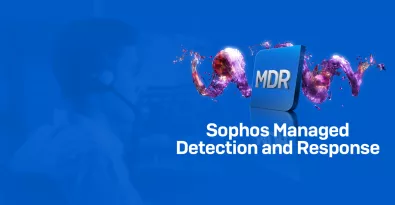From data storage and databases to virtual servers, containers, and networking software, cloud workloads are an essential technology to create, collaborate, solve problems, and get work done from anywhere. However, one unfortunate byproduct of cloud workloads is the increased the attack surface, opening your organization up to data breaches, unsanctioned access to your most sensitive systems and applications, and even interruption of services. That’s why Cloud Workload Protection (CWP) is essential for today’s businesses.
What is a Cloud Workload?
A cloud workload is a unit made up of all the relevant containers, functions, and machines that store the data and network resources to make a cloud application work. A cloud workload also includes the application itself, plus its underlying pieces of technology.
Essentially, a cloud workload is a collection of processes and resources that a cloud-based application, service, or capability needs to operate correctly. Examples include databases, web servers, serverless functions, virtual machines (VMs), and containers.
What is Cloud Workload Protection (CWP)?
Cloud workload protection is the ongoing task of securing the many cloud workloads that move information across various cloud environments, such as AWS, Azure, Kubernetes, and GCP. For a cloud-based application to work properly, every time a user accesses it, the application’s corresponding cloud workload must be highly available without introducing cybersecurity risk to the environment. CWP solves both of these by helping to optimize cloud workload performance and reducing the overall cloud attack surface, minimizing the risk of a security incident in your cloud environment.
What is a Cloud Workload Protection Platform (CWPP)?
A cloud workload protection platform is a security solution designed to safeguard cloud workloads. CWPP do this by offering unified visibility and management, including protection across multiple cloud providers.
Organizations that utilize public clouds such as AWS, Azure, and GCP, as well as private clouds, or a hybrid of on-premise and cloud applications, should leverage a cloud workload protection platform to help defend themselves against cyberattacks. According to Gartner, a cloud workload protection platform (CWPP) is a technology that is “primarily used to secure server workloads in public cloud infrastructure-as-a-service (IaaS) environments.” The best cloud workload protection platforms have the ability to protect multiple public cloud instances and ensure that all cloud workloads remain secure.
What are Different Types of Cloud Workloads?
Depending on the function and types of work that a cloud workload facilitates, it will have different requirements. There are two basic categories of cloud workloads: static and dynamic. A static cloud workload is always on and running in the background. Examples of static cloud workloads include machine operating systems (OS), email systems, enterprise resource planning (ERP) platforms, and customer relationship management (CRM) platforms. A dynamic cloud workload, on the other hand, only turns on when needed to perform a specific action, such as automation, specific data analytics, or spinning up a virtual server instance.
Given the nature of these two different categories of cloud workload, they will have very different security risks and approaches to cloud workload protection.
Why is Cloud Workload Protection Important?
Cyber criminals are increasing the volume and frequency of targeted malware and ransomware attacks. As cloud infrastructures continue to proliferate, attack surface vulnerabilities also increase. CWP is important to the ongoing security of your environment because it protects multi-cloud workloads while enabling you to build, run, and secure cloud applications with the speed you need to get work done, without putting users and systems at risk.
Defense strategies that focus on endpoint security alone are not enough, because they don’t address what is happening in the cloud or in multi-cloud environments. Any business using public and private clouds should have a plan for protecting their systems, data, and applications from potential cyber risk at the cloud workload level, and not just at the endpoint or device.
How Does Cloud Workload Protection Work?
The most important aspect of cloud workload protection is visibility. After all, if you can’t see it, you can’t protect it. Cloud Workload Protection Platforms (CWPP) are designed to provide the visibility you need to automatically discover all cloud workloads in your on-premise, private, and public cloud environments. Ideally, a CWPP provides you with the ability to see, manage, and protect any unmanaged cloud workloads you discover.
CWP typically begins with a comprehensive vulnerability assessment of the cloud workload by comparing its current status to your organization’s established cloud security policies. Based on the results of the assessment, you can then apply security best practices to the cloud workload.
A common cloud workload protection strategy is called workload segmentation. When using a CWPP, you can effectively segment your cloud workloads into smaller subgroups, making it easier to monitor and secure them. By sub-dividing a cloud environment into separate segments, down to the workload level, you can better define custom cloud security policies for each segment and enforce these policies with ease. Additionally, workload segmentation prevents cyber threats from traveling through your cloud network, even if one of your workload segments has been compromised.
Cloud workload protection should allow you to easily discover, monitor, and secure all of your organization’s cloud accounts, compute and storage instances, and the control plane. A CWPP can protect your data as it flows between environments. CWP delivers stronger security because it protects data at the workload level.
Here are a few of the top benefits of a cloud workload protection platform:
- Cloud workload behavior monitoring detects possible anomalies in real time that might indicate a threat
- Improved cloud workload configuration and visibility, so you can see it and protect it
- Centralized cloud workload log management and monitoring, for better visibility into every system from a central location (control plane)
- Constantly updated cybersecurity threat intelligence, to stop threats to your cloud workload before damage can be done
- Cloud workload memory protection, to prevent memory weakness exploits
How Does Cloud Workload Protection Differ from Traditional Cybersecurity?
Cloud workload protection is quite different from the traditional approach to application security on a desktop machine. Traditional cybersecurity solutions are designed to protect your perimeter networks and connected endpoints. Conversely, CWP is designed to secure your cloud infrastructure from the inside out.
Some key differences between traditional cybersecurity and cloud workload protection include:
- Ownership/Responsibility: With most traditional cybersecurity, you are responsible for securing your own, on-premise infrastructure and data. However, with cloud workload protection, responsibility is shared with your cloud service provider. Much like cloud security, your provider is responsible for the security of the cloud infrastructure itself, and you are responsible for securing the applications, data, and access to that cloud.
- Access Control: While traditional cybersecurity deals with securing access to on-premises resources, cloud workload security is focused on securing who has access to cloud-based resources, including remote users, connected devices, and cloud-based applications.
- Multi-cloud tenancy: Cloud workloads operate on the principle of multi-tenancy, meaning that multiple customers of a cloud provider may be sharing the same cloud resources. This is very different from traditional cybersecurity and requires greater security controls to ensure that each customer’s data is secure and segmented from other users.
- Scalability: The number-one benefit of the cloud is its ability to grow with your organization. Therefore, cloud workload protection has to be scalable enough to quickly and seamlessly accommodate the dynamic nature of cloud environments. Meanwhile, traditional cybersecurity is often limited by your physical infrastructure, making it can difficult to scale security solutions as you scale infrastructure.
The Final Word on Cloud Workload Protection
Sophos Cloud Workload Protection provides complete visibility into your host and container workloads, identifying malware, exploits, and anomalous behavior before they get a foothold. The Sophos CWPP offers:
- Extended detection and response (XDR) to deliver complete visibility of hosts, containers, endpoints, the network, and even cloud provider native services
- Cloud-native behavioral and exploit runtime detections, to identify threats such as container escapes, kernel exploits, and privilege escalation attempts
- Streamlined threat investigation workflows that prioritize high-risk incident detections and consolidate connected events to increase efficiency
- Integrated Live Response to establishe a secure command line terminal to hosts for remediation
Protect your host and container workloads, and identify security incidents at runtime without deploying a kernel module. With Sophos, you can secure your Windows hosts and remote workers against ransomware, exploits, and never-before-seen threats. Our CWPP delivers the ability to control applications, lockdown configurations, and monitor any changes to your critical Windows system files.
Our flexible approach to cybersecurity deployment and management means optimizing security, keeping data secure and private, while blocking active threats are goals you can easily achieve.
Contact Sophos to learn more about our Cloud Workload Protection Solution today.
Contact Request


